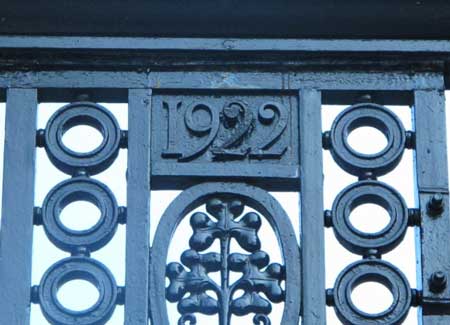1920–1929
The complex of buildings in Merrion Street was finally completed in 1922 when the north block, originally planned to accommodate the Local Government Board, was ready for occupancy. In March 1922 the provisional government of the new Irish state moved its headquarters from City Hall into the newly completed complex. The decision not to locate government headquarters in Dublin Castle, the seat of British rule in Ireland, signalled a break with the past. The choice of Merrion Street/Kildare Street as the centre of Ireland’s government was confirmed in September 1922, when the first meeting of the third Dáil took place in Leinster House, headquarters of the Royal Dublin Society. While this was a temporary arrangement – there were plans to move to the Royal Hospital at Kilmainham – in 1924 the government decided that Leinster House would become the permanent home of
the Oireachtas.
The early months in the new government offices in Merrion Street were exceptionally difficult; ministers and officials worked long into the night. The provisional government had to set up an administrative and financial system for the new state and oversee the drafting of a constitution, at a time when opponents of the 1921 treaty threatened the existence of the state. As civil war waged in the streets of Dublin during the summer of 1922, ministers took up residence in their new offices. The Department of Finance later sent them bills for the cost of food. Enforced residence in Merrion Street was essential for security and because of the need for constant meetings of the government: 42 meetings were held between 23 June and the end of July. The most poignant emergency meeting was probably that held at 3 a.m. on 23 August, when the government met to consider the consequences of the death of Michael Collins, chairman of the provisional government.
Despite the turbulent nature of the times, a functioning state was formed. Diarmuid O’Hegarty was secretary to the executive council, which met in the council chamber in the north wing, and principal private secretary to its president, W. T. Cosgrave. Joseph Brennan was secretary of the Department of Finance, located in the south wing, and head of the Irish civil service from 1923 to 1927. Together with his successor as secretary, J. J. McElligott, Brennan set up the Irish exchequer, introduced a system of parliamentary control over public finances and established the office of comptroller and auditor general. He served as chairman of the currency commission from 1927 to 1943, and when that body was superseded by the Central Bank he became its first governor.



